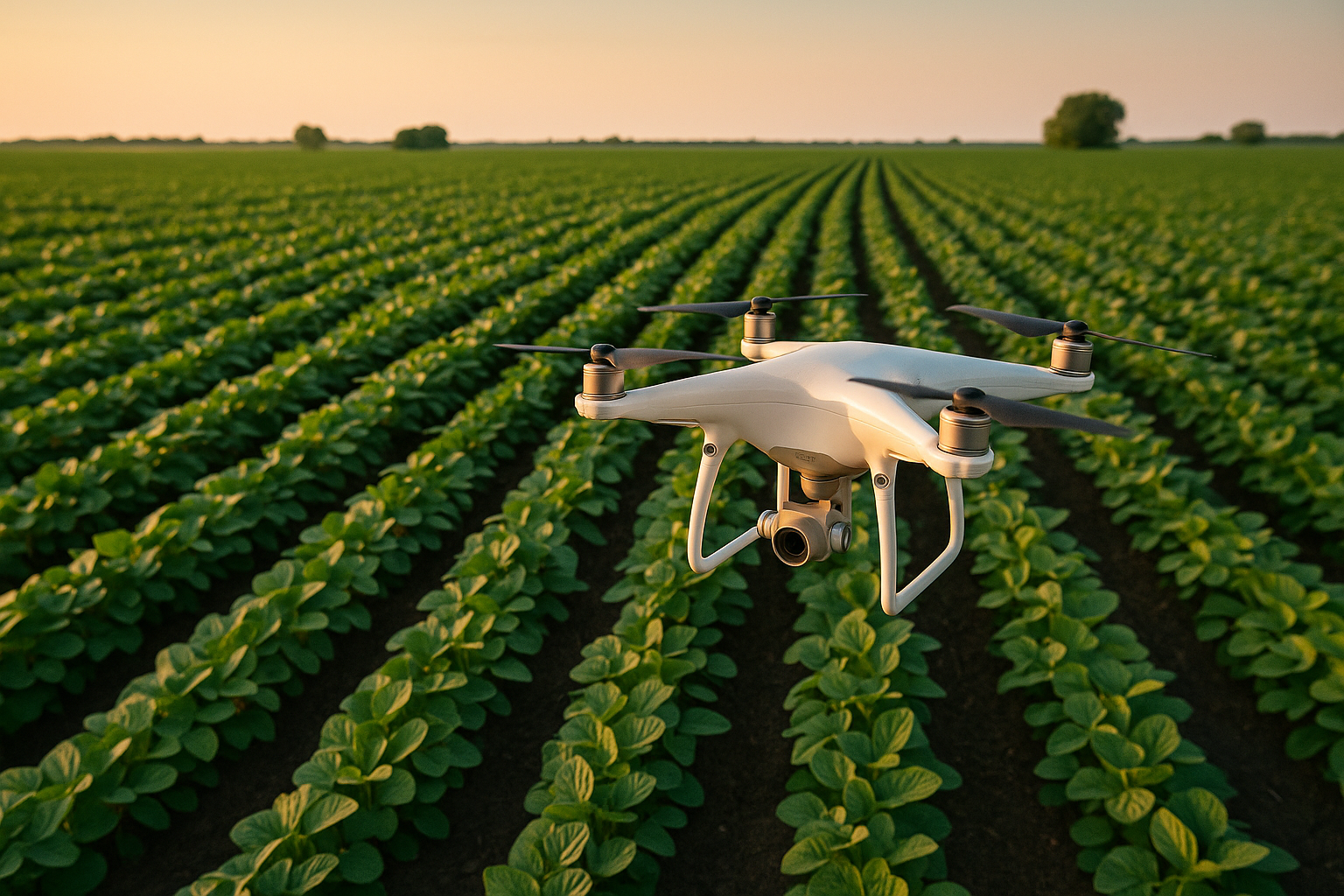The AI Revolution in Modern Agriculture
As the global population approaches 8.1 billion, the agricultural sector faces unprecedented challenges to increase food production by 70% by 2050 while combating climate change and resource scarcity. Artificial Intelligence has emerged as a game-changer, with the AgTech market projected to reach $41.2 billion by 2027 (MarketsandMarkets, 2025). From autonomous tractors to AI-powered crop monitoring, smart farming technologies are transforming traditional agricultural practices, enabling farmers to achieve higher yields with fewer resources.
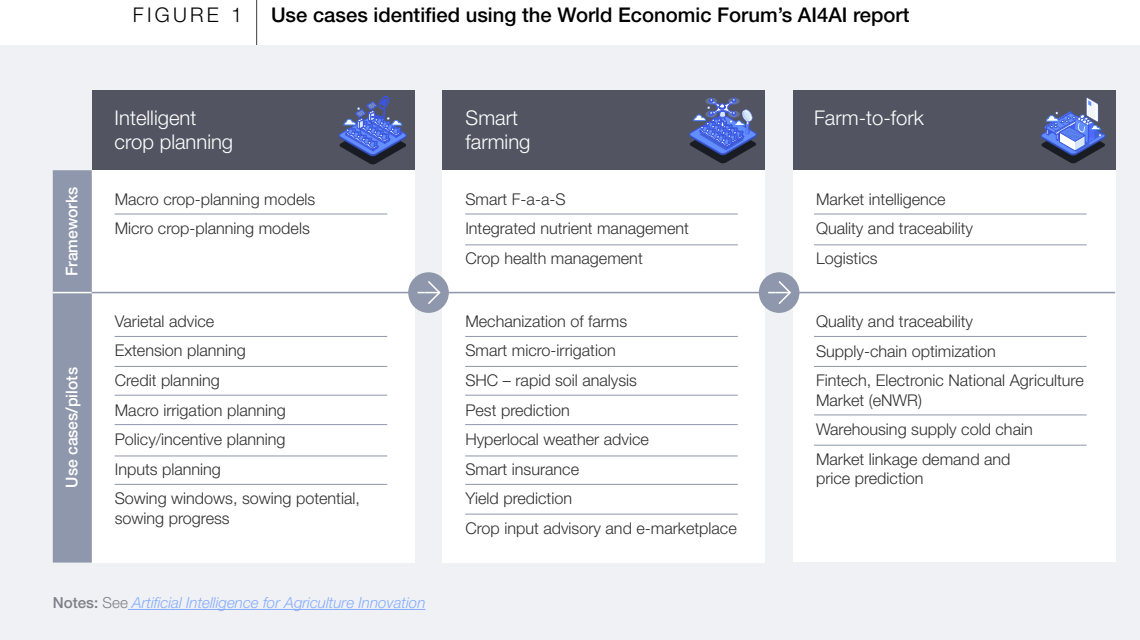
AI applications in modern agriculture from drone monitoring to robotic harvestingSource: World Economic Forum: AI in Indian Agriculture Report 2025
AI in agriculture market to grow at 25.4% CAGR through 2030 (Grand View Research, 2025)
Precision farming reduces water usage by 30% and increases yields by 25% (FAO, 2025)
AI-powered drones monitor 1,000+ acres daily, 100x faster than manual methods (DroneDeploy, 2025)
Global smart greenhouse market to reach $4.3B by 2027 (Allied Market Research, 2025)
Precision Agriculture: Data-Driven Farming
The integration of IoT sensors, satellite imagery, and machine learning has given rize to precision agriculture, enabling farmers to make data-driven decisions with centimeter-level accuracy. Modern AI systems analyze soil conditions, weather patterns, and crop health in real-time, providing actionable insights that optimize every aspect of farming operations. John Deere's latest autonomous tractors, equipped with computer vision and AI, can now identify and eliminate 90% of weeds while reducing herbicide use by 80% (John Deere, 2025). These smart systems continuously learn and adapt, improving their accuracy and efficiency with each growing season.
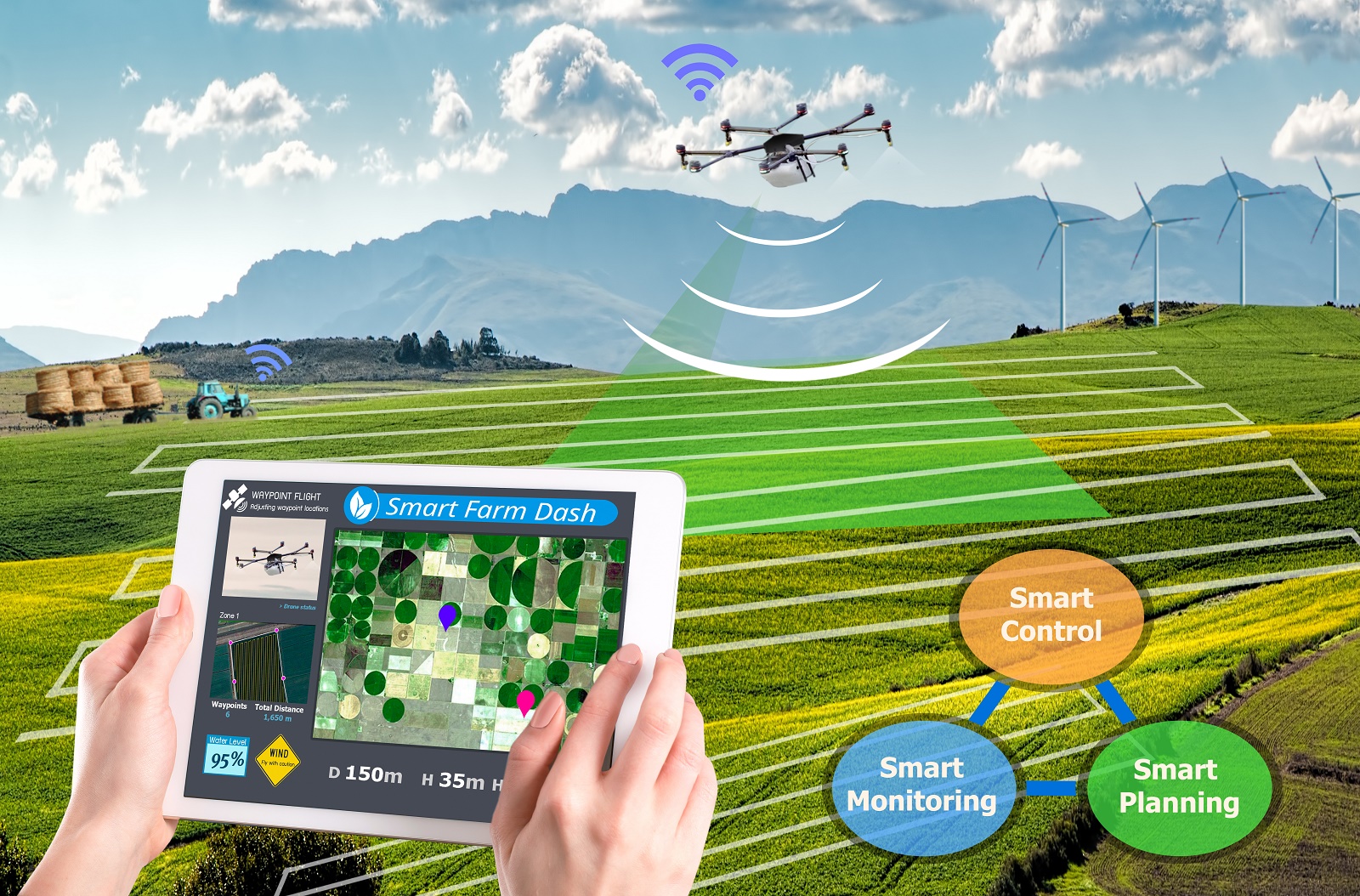
Precision agriculture technologies including soil sensors and satellite monitoringSource: Precision Agriculture: What is it? 2025
Precision farming market to reach $16.3B by 2028 (Fortune Business Insights, 2025)
AI reduces fertilizer use by 20% while increasing crop yields (Nature Sustainability, 2025)
Soil sensors improve irrigation efficiency by 40% (American Society of Agricultural and Biological Engineers, 2025)
Satellite monitoring reduces crop loss by up to 30% (NASA Harvest, 2025)
Autonomous Farming Equipment
The agricultural robotics market is experiencing explosive growth, with autonomous tractors, harvesters, and drones becoming increasingly common on modern farms. These AI-powered machines operate 24/7, performing tasks with superhuman precision and consistency. The latest generation of agricultural robots can identify and pick ripe fruits with 99% accuracy, addressing labor shortages and reducing post-harvest losses by up to 40% (International Federation of Robotics, 2025). Companies like Monarch Tractor and Naïo Technologies are leading the charge, developing electric, autonomous solutions that reduce carbon emissions while improving farm productivity.
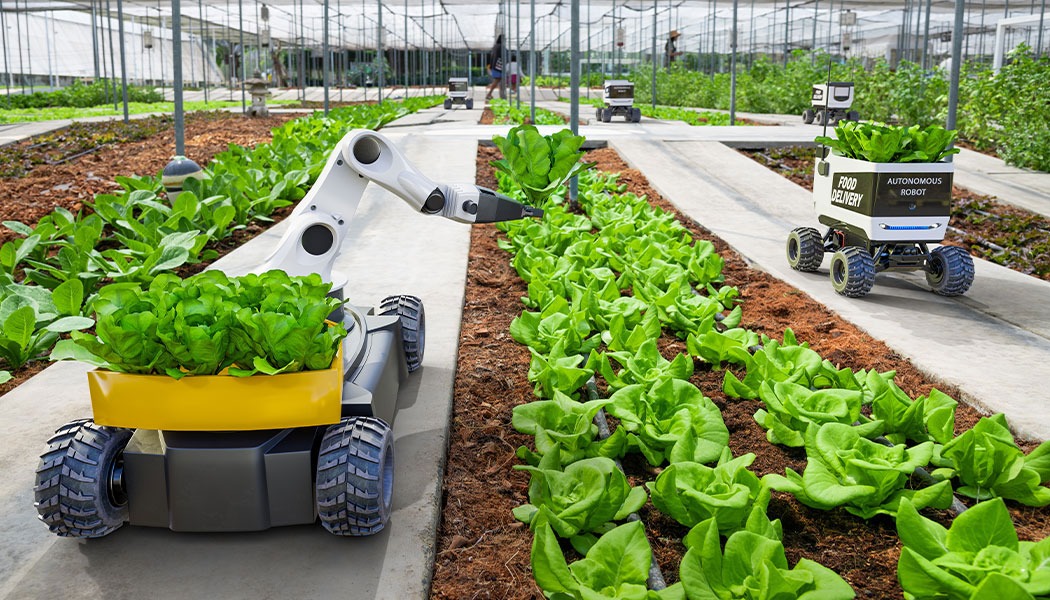
Autonomous tractors and robotic harvesters in action on smart farmsSource: Autonomous Mobile Robots: The Future of Vision-Enabled Agriculture 2025
Agricultural robotics market to reach $35.6B by 2030 (Allied Market Research, 2025)
Autonomous tractors reduce fuel consumption by 15-20% (CNH Industrial, 2025)
Robotic harvesters increase picking speed by 10x (AgriFutures Australia, 2025)
AI-powered drones reduce pesticide use by 50-90% (PrecisionHawk, 2025)
Climate-Smart Agriculture
As climate change intensifies, AI is helping farmers adapt to increasingly unpredictable weather patterns and environmental stresses. Predictive analytics platforms leverage historical data and weather models to forecast optimal planting times, disease outbreaks, and yield potential with 90% accuracy (The Climate Corporation, 2025). Startups like Pivot Bio are developing AI-powered microbial solutions that fix atmospheric nitrogen, reducing the need for synthetic fertilizers that contribute to greenhouse gas emissions. Meanwhile, vertical farming systems powered by AI optimize light, water, and nutrient delivery, enabling year-round production with 95% less water than traditional farming (AeroFarms, 2025).

Climate-smart agriculture techniques and vertical farming systemsSource: Climate-smart Agriculture: A Sourcebook 2025
Climate-smart agriculture could increase global food production by 58% (World Bank, 2025)
AI weather forecasting reduces crop losses by 30-50% (The Climate Corporation, 2025)
Vertical farming uses 99% less land than conventional agriculture (USDA, 2025)
AI-optimized irrigation reduces water usage by 40% (World Resources Institute, 2025)
The Future of AI in Agriculture
Looking ahead to 2026 and beyond, the convergence of AI with other emerging technologies promizes to further transform agriculture. Digital twin technology creates virtual replicas of entire farms, enabling farmers to simulate and optimize every variable before implementing changes in the real world. Blockchain-powered supply chains provide unprecedented transparency from farm to fork, while AI-driven food safety systems detect contaminants with 99.9% accuracy (IBM Food Trust, 2025). As these technologies mature, they will enable a new era of sustainable, efficient, and resilient food systems capable of feeding the world's growing population while preserving our planet's resources.
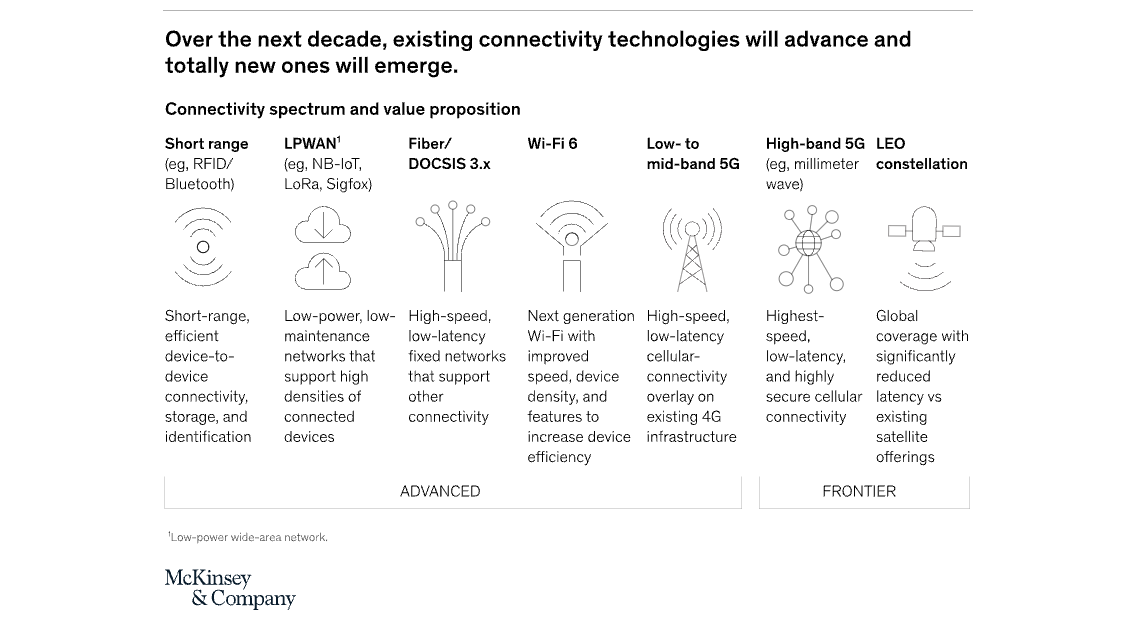
Future technologies in agriculture including digital twins and blockchainSource: Future Farming: A McKinsey Report 2025
Digital twin market in agriculture to reach $2.1B by 2028 (MarketsandMarkets, 2025)
Blockchain in agri-food to reach $1.4B by 2028 (Allied Market Research, 2025)
AI food safety systems reduce contamination recalls by 95% (IBM, 2025)
Smart greenhouses increase crop yields by 300% (HortiTech, 2025)
References
Food and Agriculture Organization (FAO). (2025). The State of Food and Agriculture 2025.
World Economic Forum. (2025). AI in Agriculture: Transforming Global Food Systems.
MarketsandMarkets. (2025). AI in Agriculture Market - Global Forecast to 2030.
The Climate Corporation. (2025). Digital Agriculture Report 2025.
International Federation of Robotics. (2025). World Robotics: Industrial and Service Robots.
World Bank. (2025). Climate-Smart Agriculture: Policies and Investments.
IBM Food Trust. (2025). Blockchain in Food Supply Chains: 2025 Report.
McKinsey & Company. (2025). The Future of Farming: How AI is Transforming Agriculture.
Nature Sustainability. (2025). AI for Sustainable Food Systems.
USDA. (2025). Technology and the Future of American Agriculture.
Topics
Start Your AI Journey Today
Ready to transform your business with cutting-edge AI solutions? Contact our team of experts to discuss your project.
Schedule a Consultation